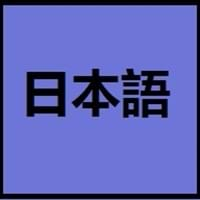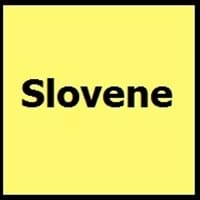Japanese and Slovene
Countries
Japan
European Union, Slovenia
National Language
Japan
Austria, Croatia, Hungary, Italy, Slovenia
Second Language
Not spoken in any of the countries
Not spoken in any of the countries
Speaking Continents
Asia, Pacific
Europe
Minority Language
Palau
Austria, Hungary, Italy
Regulated By
Agency for Cultural Affairs (文化庁) at the Ministry of Education
Slovenian Academy of Sciences and Arts
Interesting Facts
- In Japanese Language, there are 4 different ways to address people: kun, chan, san and sama.
- There are many words in Japanese language which end with vowel letter, which determines the structure and rhythm of Japanese.
- The Freising Monuments is the oldest preserved records of written Slovene from 10th century.
- The first Slovene book was printed in 1550.
Similar To
Korean Language
Serbo-Croatian
Derived From
Not Available
Not Available
Alphabets in
Japanese-Alphabets.jpg#200
Slovene-Alphabets.jpg#200
Writing Direction
Left-To-Right, Horizontal, Top-To-Bottom
Left-To-Right, Horizontal
Hello
こんにちは (Kon'nichiwa)
Halo
Thank You
ありがとう (Arigatō)
Hvala
How Are You?
お元気ですか (O genki desu ka?)
Kako se imate?
Good Night
おやすみなさい (Oyasuminasai)
Lahko noč
Good Evening
こんばんは (Konbanwa)
Dober večer
Good Afternoon
こんにちは (Konnichiwa!)
Dober dan
Good Morning
おはよう (Ohayō)
Dobro jutro
Please
お願いします (Onegaishimasu)
Prosim
Sorry
ごめんなさい (Gomen'nasai)
Oprostite
Bye
さようなら (Sayōnara)
Nasvidenje
I Love You
愛しています (Aishiteimasu)
Ljubim te
Excuse Me
すみません (Sumimasen)
Oprostite
Dialect 1
Sanuki
Prekmurje Slovene
Where They Speak
Kagawa
Hungary, Slovenia
Where They Speak
Fukuoka
Italy
Where They Speak
kansai
Slovenia
Speaking Population
Not Available
Native Name
日本語
Not available
Alternative Names
Not Available
Slovenian, Slovenscina
French Name
japonais
slovène
German Name
Japanisch
Slowenisch
Pronunciation
/nihoɴɡo/: [nihõŋɡo], [nihõŋŋo]
[slɔˈʋèːnski ˈjɛ̀ːzik], [slɔˈʋèːnʃt͡ʃina]
Ethnicity
Japanese (Yamato)
Slovenes
Language Family
Japonic Family
Indo-European Family
Subgroup
Not Available
Not Available
Branch
Not Available
Not Available
Early Forms
Old Japanese, Early Middle Japanese, Late Middle Japanese and Early Modern Japanese
No early forms
Standard Forms
Japanese
Slovene
Language Position
Not Available
Signed Forms
Signed Japanese
Not Available
Scope
Individual
Individual
ISO 639 6
Not Available
Not Available
Glottocode
nucl1643
slov1268
Linguasphere
45-CAA-a
53-AAA-f
Language Type
Living
Living
Language Linguistic Typology
Subject-Object-Verb
Not Available
Language Morphological Typology
Agglutinative, Synthetic
Fusional
All Japanese and Slovene Dialects
Most languages have dialects where each dialect differ from other dialect with respect to grammar and vocabulary. Here you will get to know all Japanese and Slovene dialects. Various dialects of Japanese and Slovene language differ in their pronunciations and words. Dialects of Japanese are spoken in different Japanese Speaking Countries whereas Slovene Dialects are spoken in different Slovene speaking countries. Also the number of people speaking Japanese vs Slovene Dialects varies from few thousands to many millions. Some of the Japanese dialects include: Sanuki, Hakata. Slovene dialects include: Prekmurje Slovene , Resian. Also learn about dialects in South American Languages and North American Languages.
Japanese and Slovene Speaking population
Japanese and Slovene speaking population is one of the factors based on which Japanese and Slovene languages can be compared. The total count of Japanese and Slovene Speaking population in percentage is also given. The percentage of people speaking Japanese language is 1.90 % whereas the percentage of people speaking Slovene language is Not Available. When we compare the speaking population of any two languages we get to know which of two languages is more popular. Find more details about how many people speak Japanese and Slovene on Japanese vs Slovene where you will get native speakers, speaking population in percentage and native names.
Japanese and Slovene Language Codes
Japanese and Slovene language codes are used in those applications where using language names are tedious. Japanese and Slovene Language Codes include all the international language codes, glottocodes and linguasphere.





